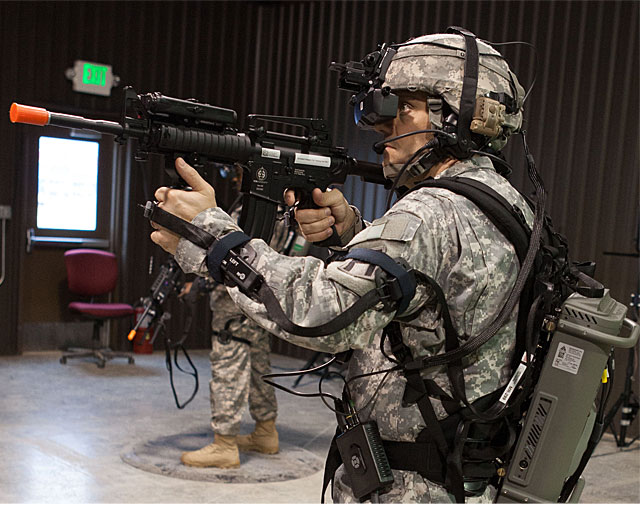
The trend towards live, virtual, constructive and/or mixed-reality training is accelerating and continues to drive investment and innovation in the United States Department of Defense (DoD) training and simulation market.
With mobile and distributed training capabilities becoming more important to meet the challenges of high operations tempo and dynamic technological changes, industry participants must continue to develop secure, robust, immersive, and realistic virtual environments while adding live elements as requirements and technology dictate.

“New disruptive, innovative technologies such as augmented reality (AR) and virtual reality (VR) devices, immersive motion systems, and artificial intelligence (AI) are transforming how training is tracked, evaluated, and administered,” said Frost & Sullivan Aerospace & Defense Research Director Michael Blades.
“These technologies can provide individual or group training in a virtual environment while enabling job requirements, personalized training programs, retention, combat readiness, and repetition at a low cost when and where needed.”
Recent research from Frost & Sullivan’s Defense Growth Partnership Subscription, US DoD Training and Simulation Market, Forecast to 2021, finds that the Navy is expected to spend the most on training and simulation, between $6 billion and $6.12 billion each year from 2016 to 2021.
(To Learn More, see the Reconfigurable Vehicle Tactical Trainer (RVTT) a collective training simulator that provides a fully immersive virtual environment that trains units from crew through platoon level on tactics, techniques, and procedures in direct support of wheeled maneuver collective training tasks. Courtesy of AiirSource Military and YouTube)
The research service provides an overview of program funding and contract activity for the DoD’s training and simulation market.
Opportunities, forecasts, drivers, restraints and technology trends are discussed.
Programs, services and segments making up the market are analyzed, with market share and competitive analysis of major players such as Raytheon, L-3 Technologies, Boeing, Lockheed Martin, Northrop Grumman, Veritas Capital Fund, Cubic Corp, General Dynamics, and CAE, Inc provided.
Complimentary access to an executive summary is available by clicking here.
U.S. defense firms’ main competition comes from European firms, such as Saab, Thales, and Leonardo, which have comparable training technologies.
A strong U.S. dollar will mean more partnerships between U.S. and European companies as U.S. companies maximize their exposure to lucrative European training contracts when foreign military sales (FMS) are deemed too costly.

Strategic imperatives for success and growth in the U.S. DoD training and simulation market include:
- Developing and implementing technologies such as AR and VR goggles to provide immersive training and optimize the live/virtual training balance;
- Utilizing secure global networks and smart devices such as phones, tablets, and AR/VR goggles to provide training anytime and anywhere to reduce the need for generalized, time-consuming training courses;
- Evaluating where inexpensive motion cueing systems can replace expensive full-motion simulators while still providing required training;
- Providing portable and programmable mobile target systems or partnering with current providers; and
- Seeking out best-of-breed commercial software companies that focus on AI and deep-learning techniques.
“The DoD continues to emphasize mixed-reality training programs with robust, secure networking based on non-proprietary open operating systems,” noted Blades.
“However, military budget uncertainties have been and will continue to be the top constraint to investment in new and innovative training and simulation technologies.”
 “Leveraging partnerships with flexible, software-focused commercial technology firms through the Defense Innovation Unit Experimental (DIUx) should lead to faster, more innovative solutions if executed properly.”
“Leveraging partnerships with flexible, software-focused commercial technology firms through the Defense Innovation Unit Experimental (DIUx) should lead to faster, more innovative solutions if executed properly.”
Frost & Sullivan’s study covers U.S. DoD training segments such as air/missile defense, ground combat, combat vehicle, communications, computer, firefighter, fixed-wing, general flight, ground vehicle, intelligence, language, logistics, maintenance, medical, miscellaneous, parachute, rotary-wing, subsurface, surface, trainer aircraft maintenance, and Unmanned Aircraft Systems (UAS) training.















